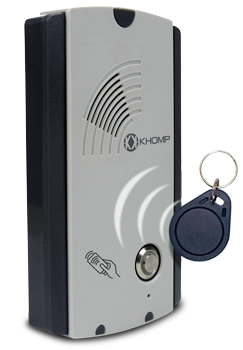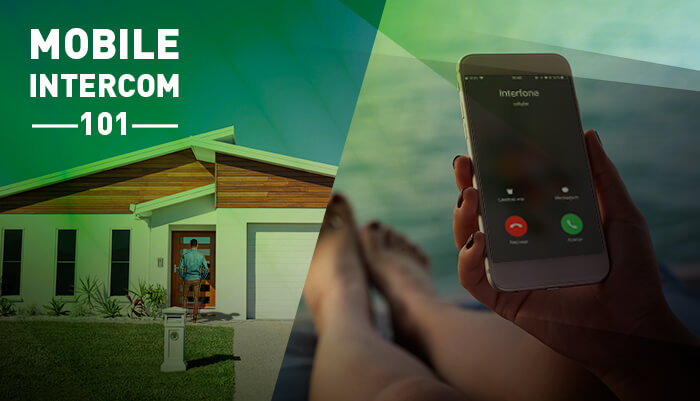One of the problems faced by individuals who own a holiday home is the need to cross miles of distance just to solve ordinary issues – such as opening a door for service providers. Have you ever wondered if there was an intercom for your beach house (or your country house, mountain house, family farm or wherever you want) capable of solving this issue without you necessarily being present on the spot?
This solution is closer than you think: based on the new personal dynamics of communication and organization of everyday tasks, everything done from the smartphone, solutions to other everyday issues (that can also be solved with a touch of your cell phone) like this one arise, as in the case of Mobile Intercom 101.
As part of the Khomp Endpoints family, this device has already been subject of another article here on the blog, which covered how GSM technology was applied to an intercom, allowing answering intercom calls directly from the cell phone.
As much as you answer the intercom, it is not always possible to be ready to answer the door. That is where one of the coolest features associated with Mobile Intercom 101 comes in: remote access control.
Better explaining it: If your city, country or beach home needs some repairs, it is possible to control the service provider access remotely from your cell phone directly and safely.
How does an intercom work for beach and holiday houses?
This is possible because the Mobile Intercom 101 sends a signal, from the GSM chip installed on the device itself, which triggers a dry contact relay, which in turn opens the door. The external activation terminal has the COM-NF (normally closed relay) status door configuration and, upon receiving the corresponding command for the door opening, it stabilizes in the COM-NA (normally open relay) status, and stays this way for the time determined by the product administrator.
This opening has mechanics that are similar to what we are accustomed to in other electronic intercoms. However, with the Mobile Intercom 101, it can be done in three different ways. When you press the button on the device, it calls the cell phone number configured as the administrator. The user answers the call and, if he/she wants to open the door, he/she enters a password (a pre-configured DTMF code), triggering the opening.
The second way is the one that the registered administrator is able to call the Mobile Intercom 101. Because the device needs a GSM chip to work, it has a unique number that can be called. By default, the device automatically answers the call. Then the administrator is able to enter his/her password to open the door, and then the call ends.
A previously configured guest in the Mobile Intercom 101 application can also command the door opening. When calling the device, this user enters a password provided by the administrator. In this case, there is a predetermined time constraint for the operation to be completed: if the guest does not enter the password within that time window, the call ends and a new attempt must be made.
All device configuration is done by the Mobile Intercom application, available for iOS on the App Store, and for Android on Google Play.
Tags to facilitate the guest day-to-day
Optimized for long distances, access through the Mobile Intercom 101 can also be performed by the tag reader. It is an optional item, but it can make life easier for those who are always on the go.

With RFID technology, an automatic identification method through radio signals, the tag reader allows quick access with no keys and without reducing the pace. This feature allows individuals carrying the registered tag to walk in without having to use the intercom, as the relay is triggered only after approaching their tag to the device.
By acquiring the Mobile Intercom with the RFID reader, the product comes with five tags, and others can be acquired later, totaling up to 23 tags per device. Activating and configuring tags is also easily accomplished by the Mobile Intercom application.
Learn more about Mobile Intercom 101 here, as well as in the other posts of this blog series, which tells you all the advantages of Khomp’s cellular intercom!
